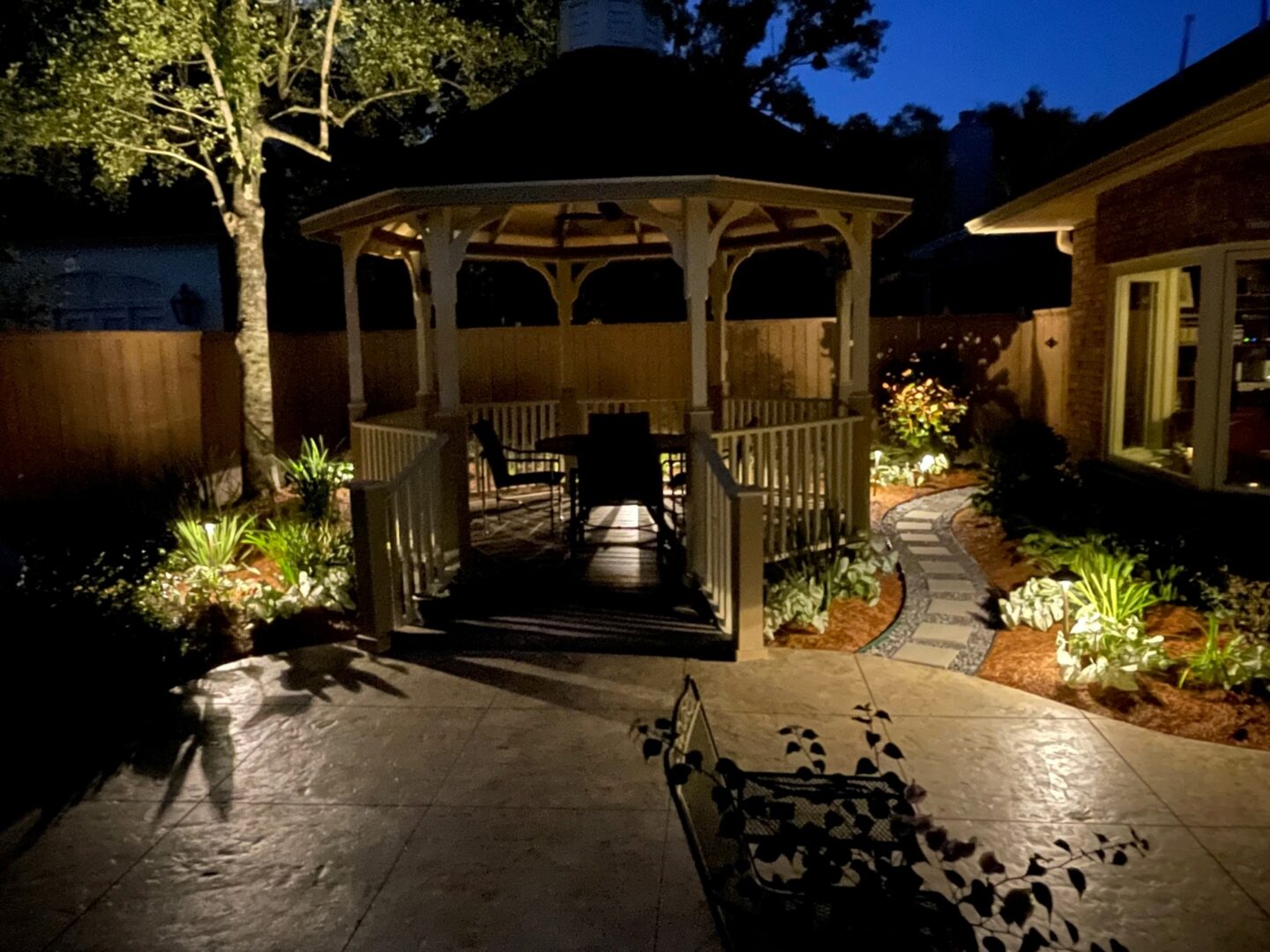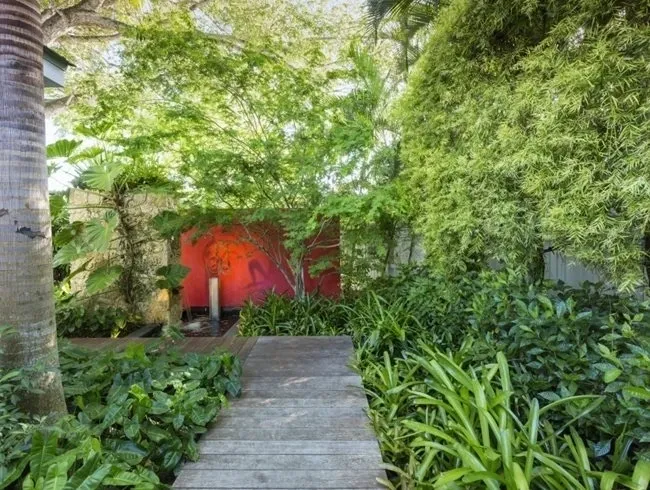7 Essential Elements of an Amazing Landscape Design for Your Outdoor Space
The 7 elements to a great landscape design include balance, unity, proportion, focal point, simplicity, functionality, and sustainability. Balance ensures visual harmony, unity brings together various elements cohesively, proportion creates a pleasing scale, while a focal point draws attention. Simplicity ensures a clean and uncluttered design, functionality emphasizes practicality, and sustainability promotes environmental consciousness. By incorporating these elements into your landscape design, you can create a visually appealing and functional outdoor space.

Selection and Placement
Designing your home’s outdoor space can be akin to painting a canvas. The key to creating a beautiful and functional composition is selecting the right elements and placing them strategically.
To begin, consider your personal aesthetic preferences. Are you drawn to a more traditional landscape or something modern? This will inform your plant and material selections. For instance, classic gardens often feature hedges, shrubs, and rose bushes, while contemporary ones gravitate towards clean lines, minimalism, and less ornamental plants.
It’s also important to consider local climate conditions. Native plants are well-adapted to the area’s unique weather patterns and, therefore, require less maintenance. Take note of sunlight exposure as well. While some foliage requires constant shade cover, others thrive under direct sun rays.
After choosing the components for your landscape design, focus on their placement. Play with different combinations to find the optimal configuration for your garden. Consider grouping plants based on color themes or varying heights if you’re looking for an eye-catching element.
Finally, blend functionality seamlessly into your design by incorporating walkways and seating areas that complement the overall look.
Maintenance and Advantages
All successful landscaping designs require upkeep to maintain their beauty and health over time. It’s essential to have a clear understanding of what each plant needs: watering frequency, pruning schedule, fertilizers used, etc. Create a calendar outlining essential tasks throughout the year – this will allow you to stay on top of seasonal requirements such as planting or winterizing perennials.
Proper landscape maintenance offers many advantages beyond aesthetics. Well-manicured gardens enhance air quality by releasing oxygen into the environment while absorbing carbon dioxide – making for cleaner healthier air around us.
Aside from providing physical benefits through our surroundings, well-maintained landscapes are valued investments that increase property resale value- up as much as 15%-20%. Considering how much people invest in their homes and outdoor living spaces, this is a significant return on investment.
To create the best possible landscape design, consider working with expert professionals to take care of maintenance tasks. They can recommend specific plants that thrive in your area’s climate and answer any questions you may have. Look for companies that offer customized packages designed to meet your unique needs throughout the various seasons of the year.
Another way to maximize maintenance benefits is to explore technological advancements like smart irrigation systems which allow homeowners to regulate watering frequency while conserving water during periods of drought. Similarly, installing LED lights as part of the landscape design can optimize energy efficiency.
Ultimately, maintaining an awe-inspiring outdoor space requires careful consideration and attention. But when executed correctly, it yields the rewards of a vibrant, thriving environment and soaring property values.
Paths and Architecture
Paths and architecture refer to the structural layouts and elements of your outdoor space. An excellent landscape design incorporates well-defined walkways, patios, or decks, strategically placed lighting fixtures to illuminate these areas and using creative landscapes to establish specific moods. The paths should be inviting, leading guests to explore and relax in the outdoor space. Incorporating a focal point, such as patios or pergolas, can draw people in; they provide a natural stopping point that encourages social gathering. At the same time, they add value to your home by expanding its living space.
If you have a large garden with an array of flowers blooming at different times of the year, paths can lead visitors past these fragrant zones. Stone pavers bordered by lush greenery can brighten up spaces while maintaining a clean aesthetic. Incorporating trellis arches or pergolas with climbing plants adds an element of contrast and depth while providing much-needed shade from the sun during hot summer days.
Architectural elements like retaining walls or fences offer privacy screening and can create boundaries within your landscape design. For example, incorporating a fence around the swimming pool area increases safety while preserving privacy in this intimate section of the yard.
Water Features and Outdoor Art
Water features like fountains, ponds, waterfalls bring tranquility into outdoor spaces. These elements can also serve as natural cooling systems on hot summer days. Adding aquatic plants like lotus or water lilies adds vibrancy that complements other foliage in your garden. However, incorporating one needs careful consideration regarding installation costs and necessary maintenance expenses.
Outdoor art is another excellent way of bringing life into any garden design; it offers distinct character and personality to an otherwise dull environment. These art pieces personalize outdoor spaces by being fun and playful, creating focal points, or adding a solemn mood to the surroundings. From sculptures to wind chimes, the choices are endless; the right art piece can add life to your garden.
A well-sculpted stone fountain placed next to an inviting patio area can create an atmosphere of peace and relaxation in any outdoor space. If you’re planning on an abstract themed garden, much like modern art, incorporating sculptures that use simple geometric shapes makes it more appealing to your guests and creates a statement about your personality and interests. Wind sculptures near garden pathways provide subtle movement and sound, making them interesting points of attraction in your backyard.
Balance and Contrast
When designing your landscape, the key to creating a space that is pleasing to the eye is balance and contrast. Balance refers to the visual equilibrium of elements while contrast creates excitement by highlighting differences in texture, form, height, and color. A well-balanced landscape produces a feeling of harmony and calmness. An unbalanced landscape can seem cluttered, or worse yet, make one side appear heavier than the other. In contrast, a lack of contrast can make the landscape boring and monotonous.
To achieve balance in landscape design, place elements with similar visual weight on opposite sides of each other. For instance, when planting trees on either side of a path, make sure they are identical in size and shape for symmetry. Contrasting elements, on the other hand, can be employed to achieve visual interest or focal point. Pair plants with contrasting textures or colors to create depth and prevent monotony.
Suppose you intend to use two bright-colored flowers with an intense hue such as red in your garden for a striking effect. To avoid color overload, consider introducing white or light purple flowers nearby for contrast.
Rhythm and Unity
Rhythm and unity are also essential components of good landscape design. The rhythm is how frequently equal parts repeat across space; it could be achieved through repetition in form or color. A unified landscape design involves all elements complementing one another to create a harmonious view. This could also mean selecting materials that blend well together.
A landscape should have repeating patterns that create a sense of flow throughout the design. Repeating shapes can help to emphasize specific areas and anchor them visually within the garden space . For example, installing a row of pavers combined with small perennials every few feet provides rhythm to an otherwise open area.
To maintain unity in your design, ensure that all parts match and work together cohesively despite their respective textures or colors. Create a unified look by having all the elements in your garden relate to the overall theme and purpose.
Keep in mind that unity, rhythm, and balance don’t mean symmetry or monotony, but creating an environment that engages with your senses and emotions.
Color and Texture
When designing an outdoor space, one of the key elements to consider is color and texture. Plants with different colors and textures can add visual interest, create contrast, and complement the other design elements in your space. Consider pairing soft textures, like ornamental grasses or lamb’s ear, with coarser textures, like holly bushes or yuccas. Mixing up the colors throughout your landscape is another way to add depth and make your space more interesting.
For example, combining bright red roses with soft pink hydrangeas can create a stunning contrast that will draw the eye. Additionally, you can include plants with colorful foliage like purple leaf sand cherry trees or burgundy coleus to add a pop of color when flowers aren’t in season.
A table is an excellent way to summarize recommended plants by color and texture:
| Color | Texture | Recommended Plants |
| Red | Soft | Roses |
| Pink | Coarse | Hydrangeas |
| Purple | Soft | Lavender |
| Green | Coarse | Holly bushes |
Now that we’ve covered the importance of color and texture let’s move on to light, sound and scent.
Light, Sound and Scent
While often overlooked, light, sound, and scent are essential features of landscape design, creating moods ranging from relaxation to entertainment. Intentionally placed lighting can emphasize elements like trees or water features while providing additional safety when walking outside at night. Soft background music or serene fountains provide ambient noise and help block out less desirable sounds such as traffic. Finally, aromatherapy using scented plants or candles can complete the sensory experience for anyone using the space.
Imagine sitting outside on a cool summer night. The landscape is gently illuminated by soft lighting, providing a relaxing ambiance. You can hear water trickling in a nearby fountain while subtle scents of lavender and jasmine waft through the air. It’s easy to forget your worries when surrounded by such serene elements.
While incorporating these features may seem like an added expense at first, research has shown that having a properly designed outdoor space can significantly increase the resale value of your home. Furthermore, it has also been attributed to improving general mental well-being for people who spend significant amounts of time outdoors.
Quick Tips:
LARGE GROUPINGS
No matter what size area you’re planting “you need masses of plants” You can five or six species of plants but use plenty of each for impact. Masses unify a heavily planted garden.
EMBRACE THE LONG VIEW
Emphasize its length with a straight path with dramatic focal points at each end. Small gardens gain a sense of depth when you accentuate long views across the garden.
PLANT A NATIVE BACKDROP
Native plants are more resistant to pest and the most durable once they are established.
LIGHT IT UP
Lighting is a huge part of any design. Focus on highlighting important features and letting less important elements recede into the darkness.
BIGGER ISN’T ALWAYS BETTER
Proper proportion is key to a successful garden design. They must relate well to the size of the house and other garden elements. Around pools it is best to be on the small side with plant size so backyard doesn’t appear jam packed.
PLANT SEE THROUGH PLANTS
Soften patio or give a small garden a greater sense of depth by breaking it up with planters. Fill them with an airy trees rather than shrubs.
FOUNTAINS I’M NOT A FAN BUT THEY SHOULD LOOK GOOD DRY
A fountain is not always on, so make sure it looks just as good off as when it’s on
Any questions please call Mario
Clean Cut Landscape Co.
New Orleans and Metairie Landscape Specialist




